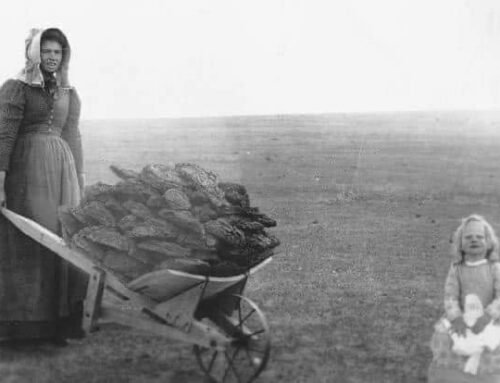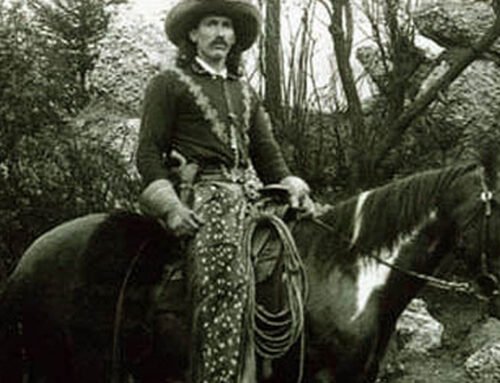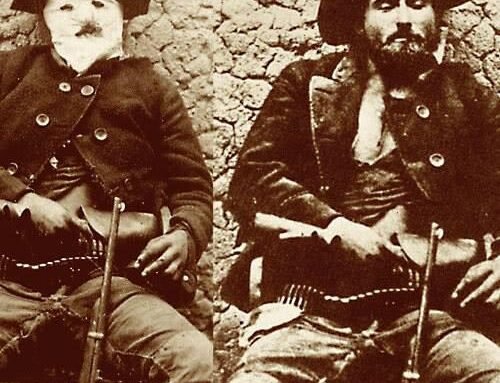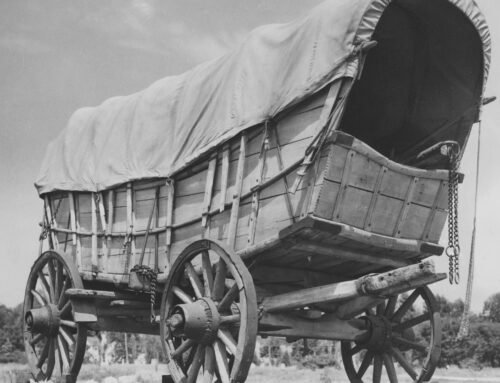Old West gold prospector
By western author Nick Brumby
 “You can keep your open vistas, your stinking cattle, your guns and high society. I’ll trade it all for a pickaxe, a shovel, a gold pan, an aching back, and the chance to strike it filthy rich.”
“You can keep your open vistas, your stinking cattle, your guns and high society. I’ll trade it all for a pickaxe, a shovel, a gold pan, an aching back, and the chance to strike it filthy rich.”
When the Wild West era began, prospects were grim for those searching for precious metals. After the Civil War, a string of economic depressions sent people rushing west out of desperation. They mined for gold, silver, copper zinc, and even asbestos. In the process, they drank unclean water, succumbed to mercury and lead poisoning, and inhaled dangerous dust. Others became casualties of explosions and electrocutions, slipped on rocks, and fell off ladders. Though a lucky few prospectors found the goose that laid the golden egg, many instead found themselves on a wild goose chase.
It took a special kind of man to survive, let alone thrive, when searching for his fortune. Anyone could buy a tent, digging implements and stake a claim. But not everyone had the grit and willpower to survive living in the wilderness, and few knew the land well enough to know where the gold might be.
 Prospectors traveled across the American West, carrying picks, shovels and gold pans. The majority of early prospectors had no training and relied mainly on luck to discover deposits.
Prospectors traveled across the American West, carrying picks, shovels and gold pans. The majority of early prospectors had no training and relied mainly on luck to discover deposits.
Traditional methods of prospecting involved combing through the countryside, often through creek beds and along ridgelines and hilltops, often on hands and knees looking for signs of mineralisation in the outcrop. In the case of gold, all streams in an area would be panned at the appropriate trap sites looking for a show of ‘colour’ or gold in the river trail.
Once a small occurrence or show was found, the hard work started with pick and shovel with pick and shovel, and often via the addition of some simple machinery such as a sluice box, races and winnows, to work the loose soil and rock looking for the appropriate materials
 Experienced gold panners knew to look for streams with black sand in the sediment and banks with orange and yellow stains— these were indications of the same geologic forces needed to create gold. Then, a smart prospector would look for a bend in the stream, or a rock that created an eddy; water slows here, and because gold is heavy, it drops out of the current and collects in these places.
Experienced gold panners knew to look for streams with black sand in the sediment and banks with orange and yellow stains— these were indications of the same geologic forces needed to create gold. Then, a smart prospector would look for a bend in the stream, or a rock that created an eddy; water slows here, and because gold is heavy, it drops out of the current and collects in these places.
A prospector had to be enterprising and tough, not only to survive the notoriously rowdy mining camps, but to be successful at an endeavor that was dangerous, difficult, and often disappointing.
In a letter to his cousin, postmarked March 1850, California miner S. Shufelt detailed the sacrifices many prospectors made in the name of gold fever: “Many, very many, that come here meet with bad success and thousands will leave their bones here. Others will lose their health, contract diseases that they will carry to their graves with them. Some will have to beg their way home, and probably one half that come here will never make enough to carry them back. But this does not alter the fact about the gold being plenty here…”
 To be fair, some prospectors did find their fortune, none more so than the legendary George Hearst. Born to farming parents in Missouri in 1820, Hearst would go on to have a net worth equal to 1/712th of the GNP of the entire US, and serve two terms as a California senator, following a career as one of the first famous miners in the US.
To be fair, some prospectors did find their fortune, none more so than the legendary George Hearst. Born to farming parents in Missouri in 1820, Hearst would go on to have a net worth equal to 1/712th of the GNP of the entire US, and serve two terms as a California senator, following a career as one of the first famous miners in the US.
Hearst worked as a quartz miner and prospector for nine years, before purchasing a stake in the Ophir silver mine in Nevada. By the end of the year, the mine had produced 38 tons of silver ore, which was smelted in San Francisco and sold for a profit of $91,000, equivalent to $2.5m.
He went on to invest in the Pacific mine in New Mexico, the Anaconda mine in Montana, the Homstake mine in South Dakota, and the Ontario silver mine in Utah, the last of which contributed $12m to his personal fortune of $19m at the time of his death.
 For every George Hearst there were a million prospectors who headed home poorer than when they set out. However gold fever is alive and well today. Modern-day miners can still prospect and stake claims on public lands in 19 states: Alaska, Arizona, Arkansas, California, Colorado, Florida, Idaho, Louisiana,
For every George Hearst there were a million prospectors who headed home poorer than when they set out. However gold fever is alive and well today. Modern-day miners can still prospect and stake claims on public lands in 19 states: Alaska, Arizona, Arkansas, California, Colorado, Florida, Idaho, Louisiana,
Mississippi, Montana, Nebraska, Nevada, New Mexico, North Dakota, Oregon, South Dakota, Utah, Washington, and Wyoming. Before you set out to strike it rich, check with the state’s BLM first.
Main image by Alfredo Rodriguez: ‘A miner’s frustration’
https://alfredoartist.com/

About Nick Brumby
I like a good story. And of all stories, I love westerns the most.
As a kid, I spent far too many afternoons re-watching Clint Eastwood spaghetti westerns, picking up ‘Shane’ for just one more read, or saddling up beside Ben Cartwright when ‘Bonanza’ was on TV each afternoon.
I’m a former journalist and I love horses, dogs, and the occasional bourbon whiskey. I live with my wife, daughter and our ever-slumbering hound in a 1800’s-era gold mining town – our house is right on top of the last working gold mine in the area. There may not be much gold left, but there’s history wherever you look.
I hope you enjoy my westerns as much as I enjoyed writing them!
Happy trails,
Nick


























